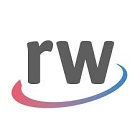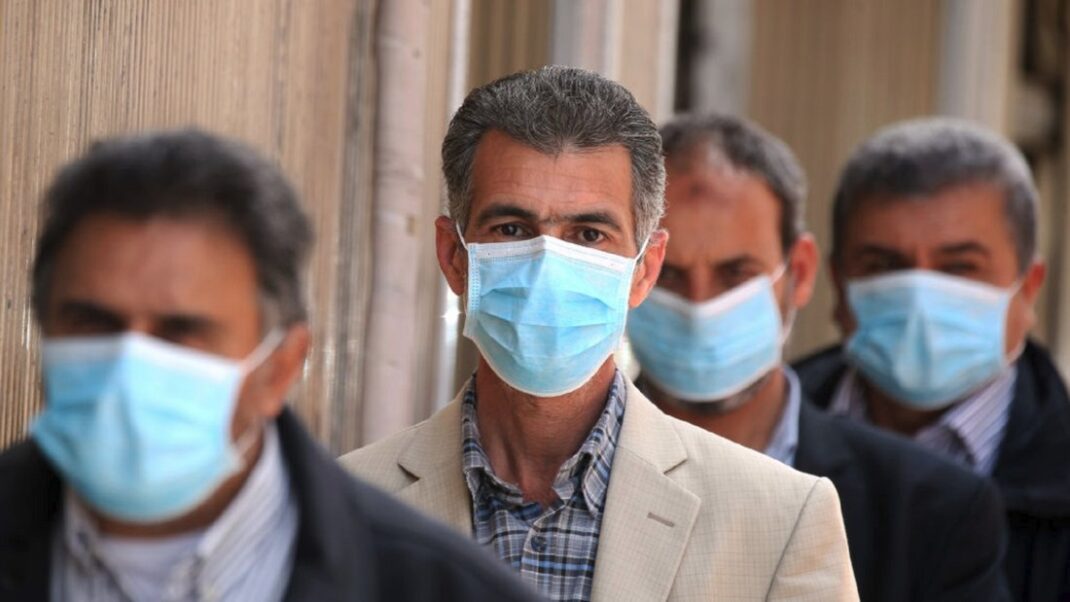
Libya is at a critical juncture. Since the de facto truce was established in June 2020, the UNSMIL-facilitated peace process has achieved several key milestones (ceasefire agreement signed in October 2020; an interim Government of National Unity (GNU) selected by the Libyan Political Dialogue Forum (LPDF) in February 2021; national presidential and parliamentary elections scheduled for 24 December 2021).
The unification of the Ministry of Health (MoH) has gone smoothly: The Minister of Health of the interim government in the east has handed over responsibilities to the Minister of Health of the GNU. However, the political and peace-building landscape remains fragile. The marked divide between the east and west will take time to resolve.
The Libyan authorities define the top challenges as follows: fragmentation of health sector institutions, weak governance, lack of accountability, extreme shortages of medical supplies and health staff; a badly disrupted PHC network, and severe funding shortages.
Libya remains classified as an L2 emergency country. Approximately 1.3 people were in need in 2021 (a 40% increase compared with 2020). Regular, prolonged power and water cuts and fuel shortages kept disrupting critical social services and affecting people’s health and livelihoods. The uncertainty of national as well as international investment for humanitarian and developmental health care programs hinders short- and longer-term reforms.
Libya remains one of the most vulnerable countries in the region due to the presence of foreign armed groups, trafficking of drugs and migrants, uncontrolled borders, organized crime and corruption.
The crisis has a strong protection dimension, with violations of international human rights and humanitarian law against civilians, including conflict-related sexual violence and grave violations against children and attacks on civilian infrastructure. Moreover, hundreds of thousands of migrants and refugees in Libya have limited access to health care services.
Strategic challenges (2021 major health system challenges of the continued largely disrupted health system)
As of today, there is no health policy in Libya. The 2009 Millennium Development Goals (MDG) Report for Libya stated that the country was on track to attain the MDGs by 2015. Reliance on lifesaving and life-sustaining health care services supported by the humanitarian response will continue across the country amidst chronic insecurity and COVID-19
pandemic.
Recently unified the Ministry of Health (MoH) is committed to lead the process of developing a national health sector recovery strategy with support from health sector organizations while facing challenges when the provision of equitable, effective and efficient health care and public health services in Libya have continued to decline.
Governance in health system required introduction of structural reforms (decentralization), empowering the lower levels in the health system hierarchy. Earlier designed comprehensive organizational structure of the Ministry of Health at national, regional and municipal level has not yielded positive results. The current protracted crisis in Libya prevents a proper recovery of the health system and the implementation of meaningful reforms.
Health service delivery envisaged universal health access by all to the quality and safe health services without facing financial risk. It also required safe, effective, quality and affordable essential medicines and vaccines were available to all.
Revision, harmonization and costing of the Libyan Essential Package of Health Services (sexual, reproductive, maternal and new-born health; child health and immunization; public nutrition; communicable and non-communicable diseases; mental health and psychosocial support mainstreaming in all health related services as well as MHPSS stand-alone services/disability; a community component; the regular supply of essential drugs and medical products and workforce training and supportive supervision) is a must, based on a data-driven approach in its governance and decision-making processes.
Reorganization of health services, establishment of regional/district health authorities and the municipal health offices is yet to be completed. The health facilities are not mapped within their geographical boundaries. Catchment area are not identified and registered. There is a need for the comprehensive plan for revamping (infrastructure and basic amenities, equipment and supplies) and revising the current number of facilities in the health care delivery network.
The situation has been exacerbated by the mismanagement of many health facilities. In 2021, reports indicated that in some areas, up to 90% (out of all existing) of primary health care (PHC) centres remained closed. One third of all health facilities in the south and east of Libya are not functional while 73% in the south and 47% in the east are partially functioning mainly due to the shortage of medical supplies and lack of human resources.
Out of the total facilities assessed in 2021, 37% (80) health facilities were reported damaged (fully and partially damaged). Outsourcing services of public health facilities to private companies is of alarming concern. Only 20% of communities have child health and emergency services, 25% – general clinical services, and 15% – services for reproductive health care and
noncommunicable and communicable diseases.
Health facilities across the country had to be closed due to increasing transmission of COVID-19 among health workers, lack of PPE and supplies. Of those remaining functioning, 80% of PHC centers did not have any of the essential medicines.
Treatment of non-communicable diseases become largely unavailable, including medicines for diabetes (e.g., insulin). Support for disability services for more than 100,000 people is one of the most common requests. No disability-specific surveys took place from the national level.
Libya continued to face repeated stockouts of critical routine immunization vaccines, compounded by difficulties securing funds from the Central Bank of Libya to place new procurement orders. There are acute shortages of medicines for child cancer patients and patients with life-threatening diseases such as TB and HIV/AIDS.
The banking system remains dysfunctional and international organizations have only limited ability to withdraw cash in Libyan dinars to fund its humanitarian operations and COVID-19 response.
A majority of regularly assessed communities report high rate of incidence of diarrhoea, lice and scabies and influenzalike illnesses. Absence of data highlights the seriousness of the actual situation on the ground.
Levels of support for rehabilitation of health facilities in remote rural areas were not sufficient, including roll of mobile medical teams in those locations. While the health workforce the overall number exceeds the WHO/SDG standards. However, inadequate skills mix, maldistribution between geographic areas and the different levels of health care, the traditional fact of over excessive HR registered for Libya are of highest concerns.
Proliferation or over excessive traditional present health infrastructure should
be reviewed: Tertiary Care Medical Centers (5); Secondary Care (97) (Rural Hospitals (32), General Hospitals (23), Teaching Hospitals (31), Specialized Hospitals (11); Primary Health Care (1355) (PHC Units (728), PHC Centers (571), Polyclinics (56).
The efficiency of the workforce is also impacted by irregular payment, internal displacement. Establishment of the staffing norms is necessary for different levels of care as a tool for deploying adequate numbers of health workers in health service delivery network equitably across regions.
In 2021 the first steps were initiated to support enhancement of health human workforce. Pharmaceuticals and other health technologies – There are chronic shortages of medicines, equipment and supplies, and very few public health facilities are offering a standard package of essential health care services.
Medicines that are supplied through specialized centers, such as tuberculosis and HIV medicines, as well as mental illness and family planning medicines, are limited or not available in health facilities.
Health information system – Despite years of support and investment from international community, there is still no national system to gather and analyze health information and monitor and assess needs, absolute lack of population/health data and the lack of data culture. There is no data available with the health authorities on a number of functioning and
non-functioning public health facilities.
Health system financing commits the government defining a formula for the equitable distribution and allocation of financial and human resources, health care network, training institutions and such entities between regions, municipalities and between facilities, including hospitals at different levels of care. Authorities have not been approving the health
budget for 2021 for months.
Although health care at public sector facilities is free for all citizen, distrust and disruption of services have led to a growing private sector. It is also a challenge to distinguish between the public and private sectors because dual practice is prevalent in Libya. In the private sector, payments are out of pocket, making fee-for-service the dominant method of
payment with very limited regulation. Out of pocket expenditure as a percentage of total health expenditure keep increasing. There is minimal oversight and regulation of pharmacies.
At present, the Government’s financial inputs are mainly limited to the disbursement of salaries with no or very little allocation for drugs, diagnostics tests and equipment. Health sector continues to advocate for an adequate amount of Libya’s GDP and part of its huge assets to be spent on health. The government must find a way to tap into these resources to cover urgent and increasing health needs and strengthen the weak health system to achieve Universal Health Coverage.
Some of key systematic obstacles in health Devaluation of the Libyan currency in the beginning of 2021 and situation with public health funding deteriorated due to outstanding debts of hundreds of millions LYD for previously procured medicines, supplies, equipment and construction works and delays to approve the 2021 national budget by the end of 2021.
Field missions across the country detected remaining structural systematic challenges in overall health governance with recognized humanitarian needs linked to the disrupted network of public health facilities, lack of supplies (medicines, consumables and equipment), lack of specialists.
Roll out of COVID-19 vaccination was significantly delayed in the country with the first COVD-19 vaccine reaching the country on 8 April 2021 with nationwide vaccination campaign started on 10 April.
The national COVID-19 preparedness and response plan has not been developed for 2021 while the plan comprised of UN and INGOs inputs was updated and disseminated (an estimated of 52 million USD).
2021 illustrated remaining needs across the country, including support to rapid response teams, procurement and distribution of PPE, procurement of lab diagnostic kits and supplies, equipment, establishment and support to the isolation sites/wards, provision of continuous capacity building support, risk communication and community engagement.
Situation with funding and support to the isolation centers remained critical. The number of earlier planned isolation centers was significantly reduced while a main number of facilities could not activate the work due to the absence of government’s support, including HR support.
Health situation deteriorated largely in some parts of the country. In the south closure of health facilities, absence and decreased testing capacities, absence of a comprehensive surveillance system, social stigma, spreading COVID-19 infection among health workers.
Proliferation of various emergency committees to respond to COVID-19 response across the country required the necessity for more centralized coordination and management with significant revision of the overall process. In this situation health sector continued its pandemic response while supporting the health authorities’ efforts to respond to COVID-19 in Libya through key response pillars defined in a comprehensive UN/INGO COVID-19 preparedness and
response plan, including normative technical guidance to help Libya rebuild its health system (working across the humanitarian/development divide).
Health sector continued to receive continuous requests for assistance from different health facilities and municipalities. A remaining challenge is to activate the health information system maintaining its data collection and analysis across the country. Libya remains one of few countries not reporting on key health performance indicators despite all earlier launched initiative.
_______________
Reliefweb




